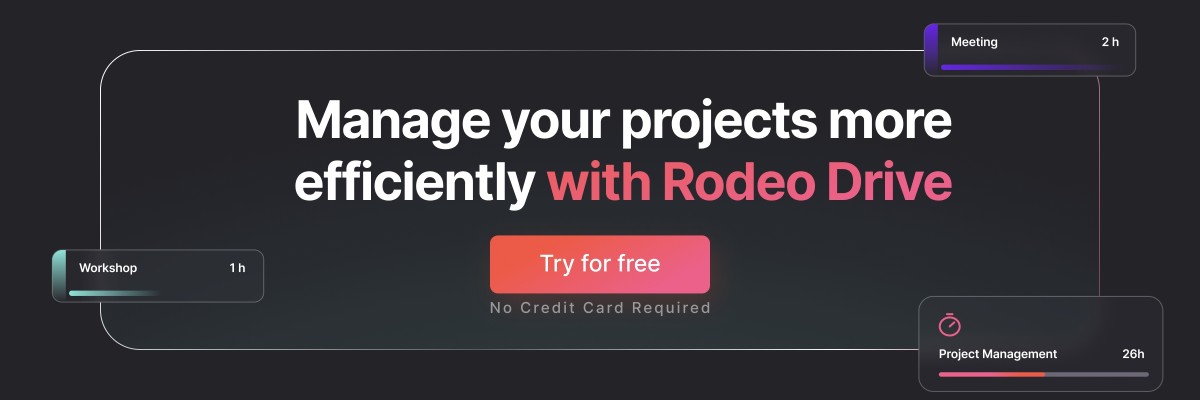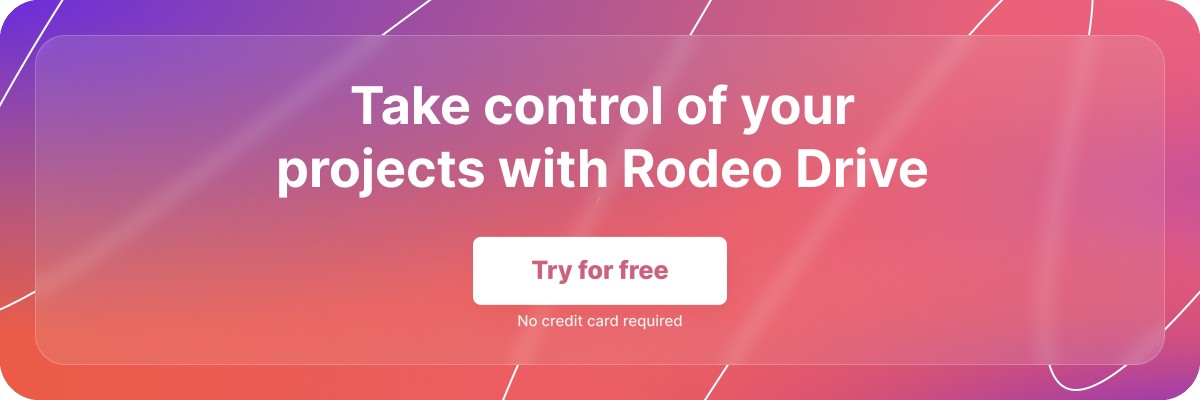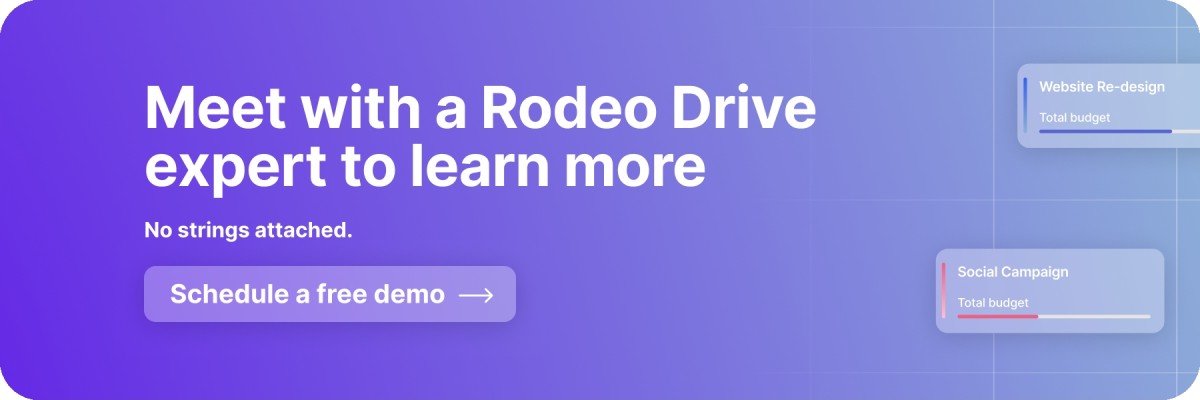How to Reduce Churn With a Solid Client Onboarding Process
What happens once you’ve signed on a new client to your agency? Well, if you want them to stick around long-term, you’ll need to design a strong client onboarding process.
The likelihood of client churn is highest in the first few months after they sign on to work with your team. That’s why having a client onboarding process in place can be a make or break in whether a client decides to keep working with your agency.
In fact, experts say that poor onboarding, customer service, and customer engagement are the top reasons why clients churn in the first 90 days. Unless your team can leave the client with the impression that they’re the right ones for the job, the client’s account might be on the line.
In this blog, we’ll discuss what exactly client onboarding is, the benefits of investing in a robust onboarding process, and 10 steps for nurturing client relationships for a positive outcome.
What is client onboarding?
Client onboarding is the process of welcoming and integrating new clients into your business for a new project. Your client onboarding process plays an important role in setting project expectations, aligning with the client’s goals, and discussing project objectives.
If done successfully, your client onboarding process will lay the groundwork for a longstanding client relationship. At a minimum, client onboarding plays a vital role in developing trust with your clients, leaving them with a strong first impression of your team.

Your customer onboarding process will involve presentations, creating and sharing project documentation, and follow-up meetings, all of which might take place in a virtual, hybrid, or in-person format. You should also be sure to highlight all of the benefits of working with your organization as it will contribute to reducing churn.
What your client onboarding process will look like is up to you, but the list of client onboarding steps provided later on in this blog will help get you started.
The benefits of implementing a strong client onboarding process
A successful client onboarding process will have significant benefits for your organization. For starters, it can reduce the likelihood of misunderstandings and scope changes while also building rapport with clients to enhance their confidence in your team.
The level of onboarding support your agency offers might be a determining factor in whether a client decides to work with you, which is yet another reason why you’ll want to devote time to creating a positive client onboarding experience.
Here are a handful of other benefits to designing a robust customer onboarding process:
- Reduces the likelihood of customer churn: If your client feels supported and heard throughout their onboarding process, they’re more likely to remain loyal to your organization and become repeat customers.
- Prevents scope creep: Aligning with the client on expectations for the project early on will prevent those requirements from shifting as the project progresses.
- Creates mutual understanding: A good client onboarding process provides insight into your client’s needs and shows them how your team can meet those needs.
- Fosters strong relationships: By establishing open communication early on, your team will establish trust with the client, paving the way for a healthy, long-term relationship.
- Improves client satisfaction: A comprehensive client onboarding process will make your clients feel valued, improving their sense of loyalty to your agency.
10 steps for a streamlined onboarding process
Although each project your organization takes on might be significantly different from one another, your client onboarding process should be standardized and easily repeatable.
This way, every client will be left with a great first impression of your organization regardless of who’s on your project team.
Plus, oftentimes, onboarding processes begin with a sales leader and end with the project manager. Everyone in your organization has a lot on their plate, so following this 10-step process can reduce the lift required and ensure that nothing falls through the cracks.
Let’s take a look at the general steps we recommend following:
1. Make sure contracts are signed and initial payments are processed
Your onboarding process is set to begin once you’ve officially signed the client on as a new account. Beginning client onboarding before there’s a legally binding agreement between you means you’ll end up wasting precious time and money if the relationship falls through.
You’ll also want to ensure that the right pricing, billing terms, and billing details are stated in your contract before invoicing clients. That will help avoid confusion when handling outstanding invoices later on.
Once this is all in order, you can begin implementing your client onboarding process.
2. Send a client onboarding questionnaire
Client onboarding questionnaires present the perfect opportunity to collect information on your client’s wants and needs in greater detail.
Of course, you’ve already gathered some information during your sales process, but this will allow your team to begin developing project plans that deliver what they’re looking for.
This step doesn’t necessarily need to happen through online surveys. You can use the same questionnaire to collect the information via a meeting or phone call. However, sending an onboarding questionnaire via email or survey is the most scalable option.
Here are a couple of points that must be covered in your client onboarding questionnaire:
- Point of contact: Who will you be primarily communicating with for matters concerning this client?
- Business vision: What are the client’s short and long-term goals? What are they looking for your team’s help with, and what do they hope to get out of your efforts? Who is their target audience or Ideal Customer Profile (ICP)?
- Previous efforts: Has the client previously worked with an agency before? What were the outcomes of that experience?
But don’t let the above bullet points restrict the type of information you include in your client questionnaire. Feel free to ask anything that’s relevant or necessary for your project planning.
3. Conduct further research on the client
Once you’ve gathered some basic information from your client through their questionnaire, you may want to conduct some follow-up research to fill in some of your understanding gaps.
The type of research you conduct as part of this step will probably depend on your project objectives. If you’re working on a marketing campaign, for example, you’ll want to look into their current efforts on their website, social media, or other channels.
Some projects will require your team to have a robust understanding of competitors and the greater industry landscape. If so, you should aim to gather a baseline understanding of these things during this step of the client onboarding process.
Also read: 15 Client Management Tools for Project Management
4. Assign a project manager and team
After gathering the necessary information, it’s time to assign a project manager and team to the client. If possible, you may want to assign specific team members to the project depending on their skillsets and experiences.
It’s also helpful if the project manager has experience in the client’s industry so that there are more commonalities on which they can build a strong relationship. That said, the ability to do so depends on the size of your team.
At this point in the client onboarding process, you will have already gathered some basic information on the client, such as their contact information, and perhaps you’ve already decided on what the team’s hourly rates and markups will be for that client.
If so, using project management software — such as Rodeo Drive — will prove beneficial. This way, you can enter all of this information into the client’s contact profile, and then quickly connect their information to a a project.

Once budgeting for the project, Rodeo Drive helps project managers create time activities with the correct hourly rates and markups, helping you stay on top of billable hours.
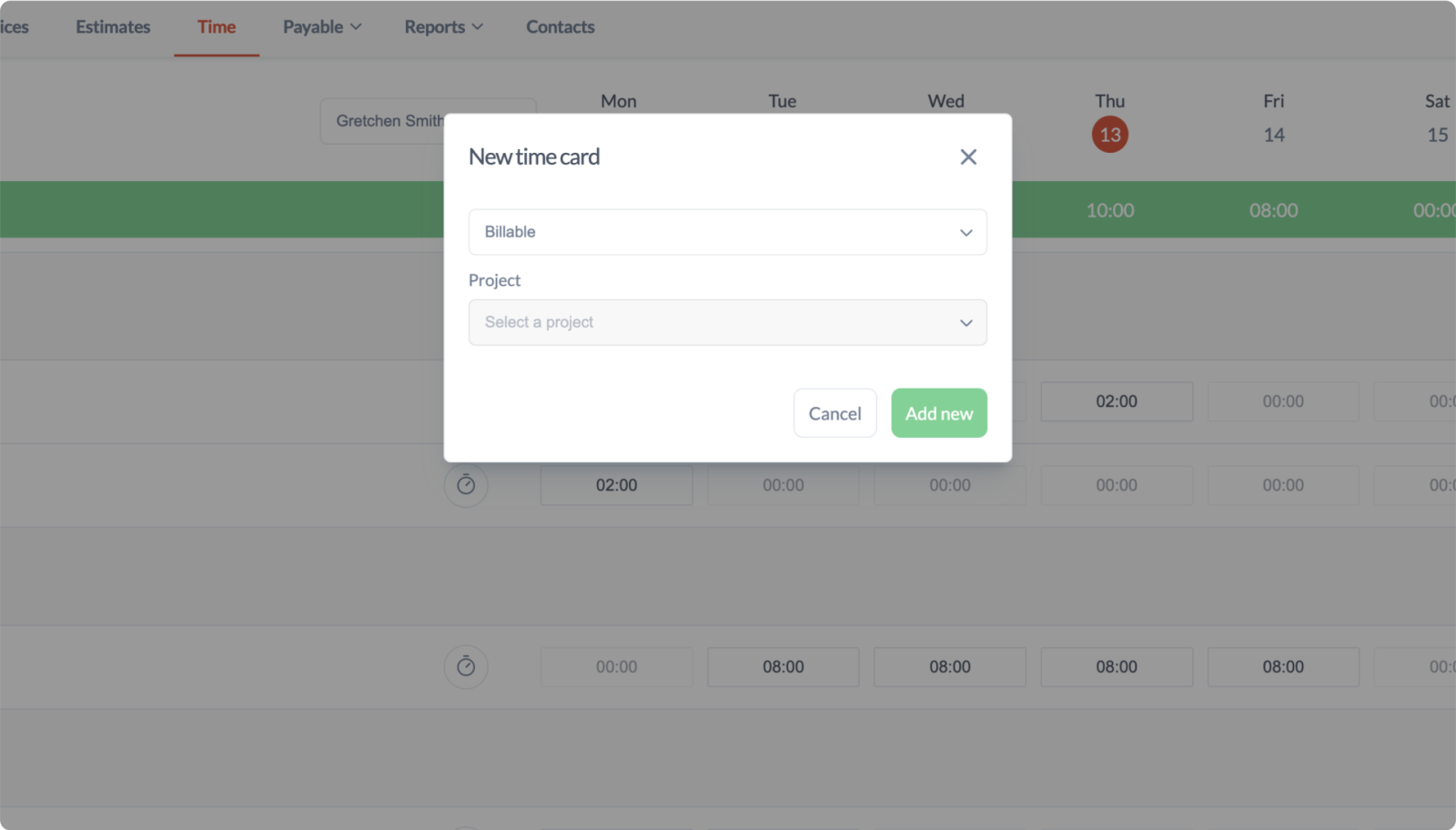
In the “Team” tab of each project, you’ll be able to add, remove, and see everyone assigned to that project, as well as their role on the team. You can transfer project ownership to the correct project manager and add team members as you decide who’s assigned to the project.
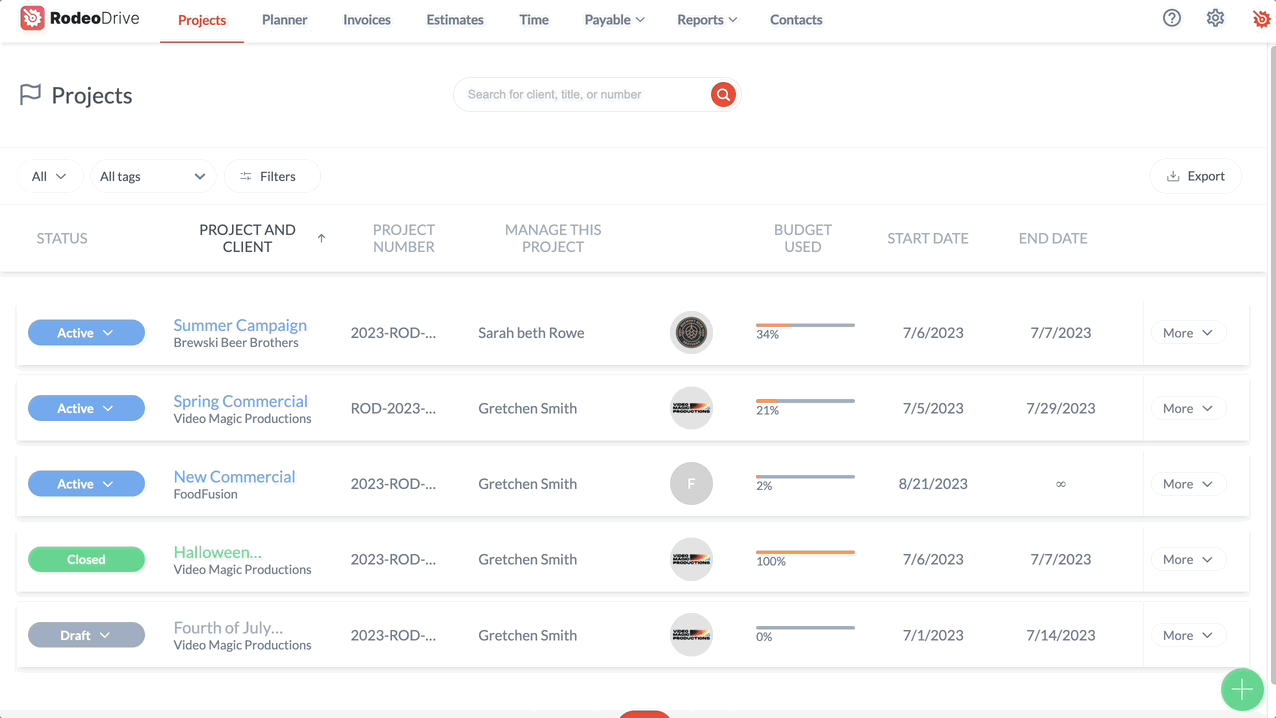
This is also helpful if your team experiences sudden turnover, as you’ll be able to add new team members in just a few clicks which will provide them immediate access to the client’s contact info, rate cards, files, and already assigned project activities. This way, they can jump into their work immediately.
5. Provide welcome materials
Providing a sort of welcome package to your newly signed client can help them feel reassured in their decision to sign with your organization, while also providing them with valuable information.
The welcome materials your team provides might include information about your business including where your office is, what to expect throughout the project, who their project team will be, how to contact them, and common FAQs.
If you’ve worked on other similar projects before that have yielded positive outcomes, you might want to share those case studies and quotes with your new client as well. This is a good technique for building trust in your team’s abilities to accomplish their goals.
Another way to build excitement is with a welcome video, as this provides a creative multimedia introduction to your company culture and team. If your company has physical swag, sending over a few items is another way to create excitement — especially when you include a handwritten note along with it.
6. Host a project kickoff meeting
Once the project team has been adequately debriefed and is ready to begin working on the project, it’s time to begin with a project kickoff meeting.

The purpose of a project kickoff meeting is to align expectations and answer client questions on the project plan and timeline. This is usually the first significant meeting of a project, and it typically comes after project costs and schedules have been agreed upon.
Because this might be the team’s first time meeting the client, it’s a good idea to discuss the project scope, the team’s approach to the project, and an overview of team roles and responsibilities.
7. Establish workflows and preferred methods of communication
Establishing clear expectations should be one of the biggest goals of your project kickoff meeting. First things first, you should discuss your team’s workflows and how the client fits into them, along with how communication will work throughout the project.
As far as communication goes, this includes discussing the client’s preferred channels for receiving updates on the project. If having standing check-in meetings is easier for them than communicating via email, that should be established during the client onboarding process as well.
Your team may or may not have an idea of what your project workflows will look like depending on your previous experience. But if you’re looking to streamline your workflows while still allowing clients to participate in the process, a project management software tool can help.
For example, Rodeo Drive brings together several project management features into a single tool, meaning you can create budgets, assign activities, track time, and send invoices from a single app. Having a centralized place for storing project information is super helpful in keeping everyone on the same page.
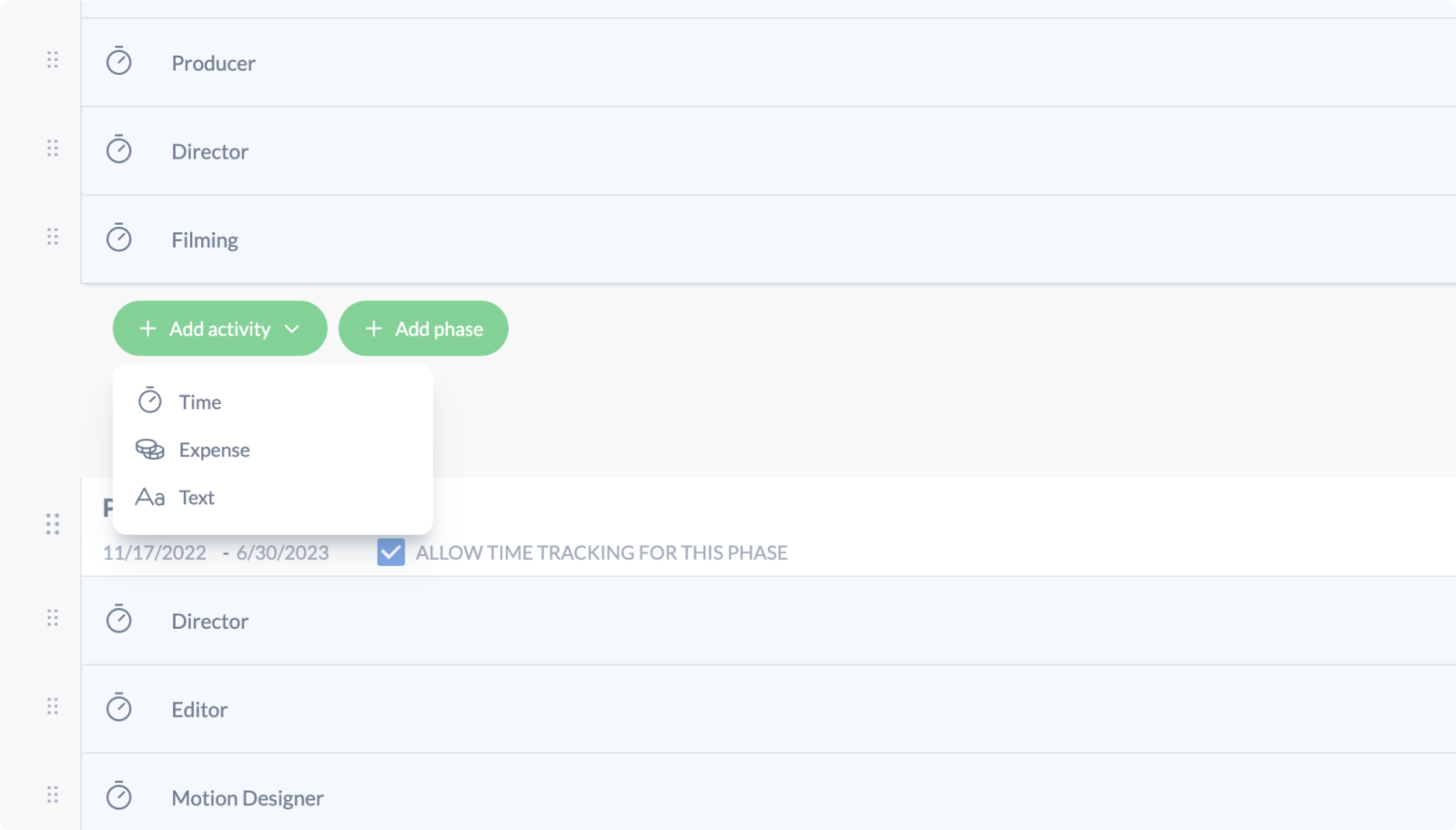
Plus, Rodeo Drive offers free guest users, meaning you can give clients access to the platform at no additional cost. This is helpful if you want them to have access to real-time reporting data on your team’s progress. And of course, you’ll retain full control over the details and data they’re able to see.
8. Set expectations on reporting frequency
Most clients expect frequent reports on the project’s progress. Failing to deliver on these expectations can leave your client unsatisfied, which is why it’s important to align their expectations early on in the onboarding process.
Unfortunately for project managers, curating these reports by hand can be very time-consuming, which is where a project management tool can come in handy again. Rodeo Drive automatically generates several types of reports based on your team’s usage of the platform.
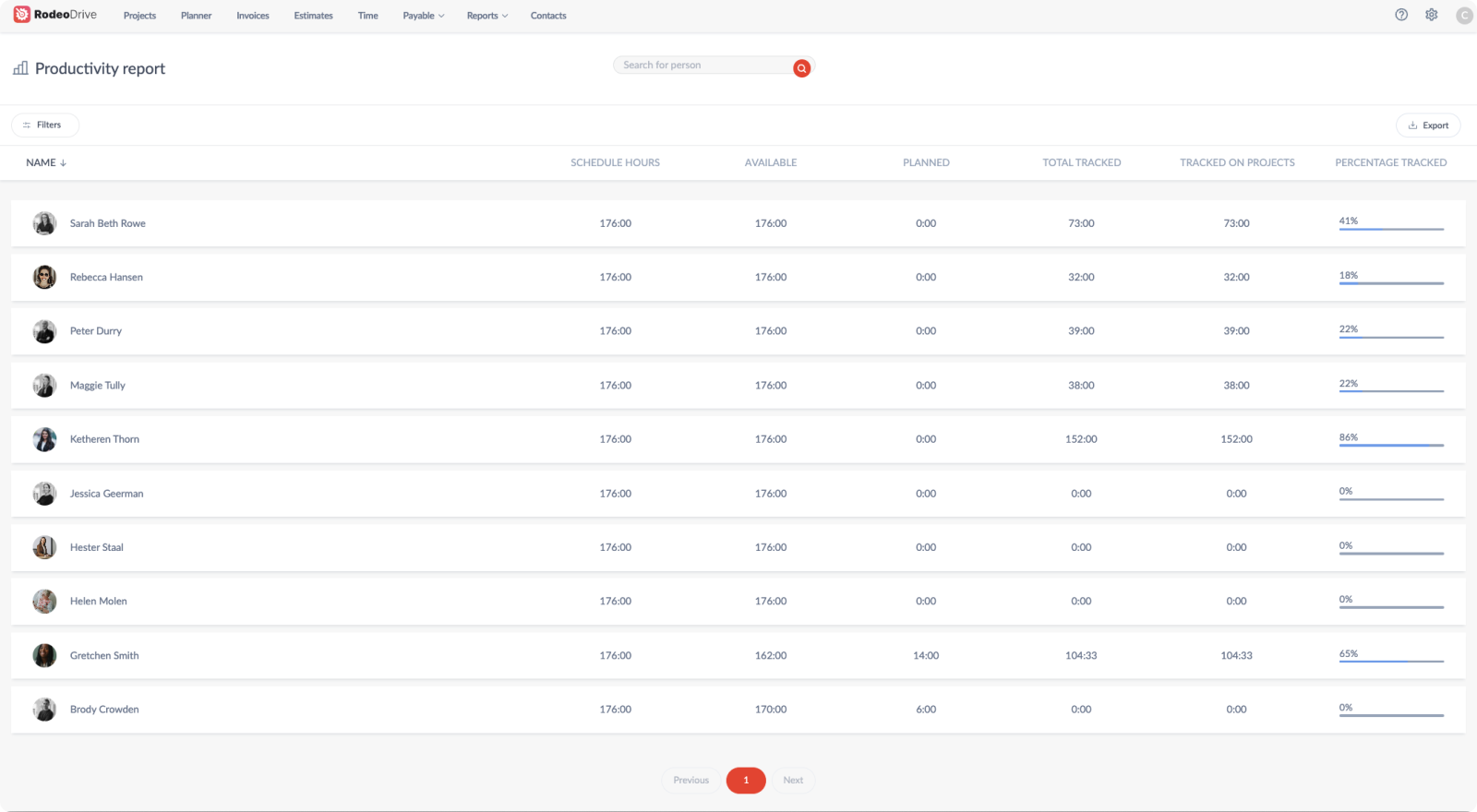
This includes reports on project profitability, employee productivity, and time registration. Each of these reports can be filtered for a look at data between certain dates, tags, and other criteria.
All reports can be exported as an Excel or CSV file, which allows you to create your own reports outside of the platform using the data, or easily send them to clients. Clients can also view these reports as guest users on Rodeo Drive.
9. Check in with the client 30 days into onboarding
A great client onboarding process should be personalized and properly tailored to meet your client’s needs. For this reason, it’s important to follow up with a phone call around 30 days after the onboarding begins to ensure that the client is satisfied with their experience thus far.
Even if their feedback is positive and there are no items requiring additional attention, a quick call will leave a great impression on your client and reiterate your commitment to their account.
This is also a good opportunity to circle back to any outstanding items that were raised earlier on in the client onboarding process. For example, perhaps your team needs the client to send over additional documents that might’ve slipped through the cracks — you can remind them during the call.
10. Solicit client feedback on how to improve your process for next time
A good client onboarding process is one where the team actively collects client feedback at the conclusion of the onboarding.
Hearing directly from the client on what they found helpful will not only show that you’re committed to listening to what they have to say, but it can also help improve your client onboarding processes for future clients.
You’ll want to gather feedback on whether you properly outlined how their project will play out and if your team adequately answered all of their questions. Asking them what they liked and disliked about their client onboarding process will also prove beneficial.
Takeaway
There you have it — our 10-step process for a smooth client onboarding workflow.
As we’ve mentioned by now, you shouldn’t go through your customer onboarding process without the help of a software tool like Rodeo Drive to help out.
Having a centralized place with client information will support the project team in navigating a new customer relationship while also giving the client piece of mind that your team has the right tools to make your project a success.
Rodeo Drive can support your client onboarding workflow with the following features:
- Guest users: Add your clients directly to the platform so they’ll have immediate access to the necessary project information.
- Estimates: Get your budgets approved by sending them as estimates to your clients directly from the Rodeo Drive platform. This way, you can kick off your projects quickly.
- Client contact management: Store client information, rate cards, files, and more in Rodeo Drive. This way, team members will always have access whenever they need it.
- Reporting: Keep clients up to speed on your project progress by sending them Rodeo Drive’s automatically generated reports with insights into team productivity and time registration.
Come see for yourself how Rodeo Drive can aid your onboarding process for a new client. Try for free today or schedule a demo to learn more.





